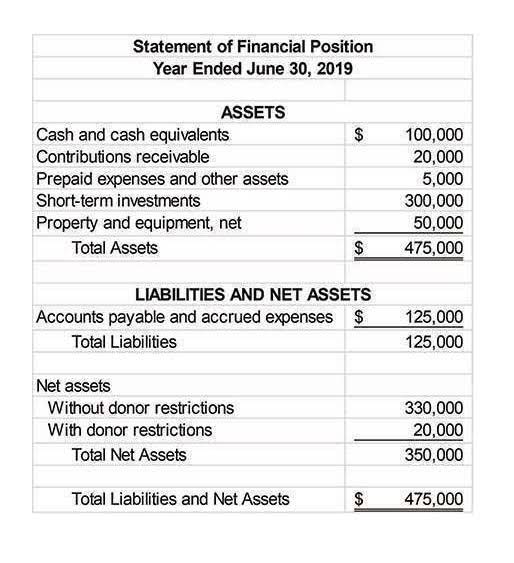State Minimum Wage Laws U S. Department of Labor
Five states have not adopted their own minimum wage rate law and, therefore, default to the federal rate of $7.25. For more than 30 years, Paycor has been guiding our clients through big changes to federal, state, and local taxes, as well as compliance. In-product compliance updates and notifications of key changes help ensure you pay your workforce the right QuickBooks rates, reducing complication, especially for multi-state employers. To help your business follow the latest minimum wage requirements for full-time and part-time workers, Paycor has created a breakdown. In conclusion, the minimum wage landscape in the United States is undergoing significant adjustments in 2025, with many states continuing their commitment to increasing wages for workers. While 21 states are seeing increases this year, these vary widely depending on local legislation, inflation adjustments, or specific ballot measures.
From Taylor Swift tickets to social media bans, here are new 2025 state laws
The Wage and Hour Division tries to ensure that the information on this page is accurate, but individuals should consult the relevant state labor office for official information. Applicable to all employees covered by the federal Fair Labor Standards Act (FLSA) except for agricultural employees and employees of municipalities and the Commonwealth of Puerto Rico. Premium pay is required after 45 hours a week in seasonal amusements or recreational establishments. The State law excludes from coverage any minimum wage around the us employment that is subject to the federal Fair Labor Standards Act unless the State wage rate is higher than the federal rate. The State law excludes from coverage any employment that is subject to the federal Fair Labor Standards Act when the federal rate is greater than the State rate. The Wage and Hour Division tries to ensure that the information on this page is accurate but individuals should consult the relevant state labor office for official information.
Best Restaurant Payroll Software for 2025
- This table does not reflect industry specific and prevailing wages.
- These state minimum wage laws go above and beyond the federal minimum wage required by the Fair Labor Standards Act (FLSA).
- At the start of 2024, New York increased its minimum wage from $14.20 to $16.
- In 2025, the state minimum wage rate will remain at the same rate.
- Then, GOBankingRates used the Bureau of Labor Statistics’ CPI inflation calculator to find the federal minimum wage in 2024 dollars for all years.
For instance, California, Washington, and Massachusetts all exceed $15 as of 2025 (with Washington checking in at a hefty $16.66). These states argue that a higher wage fosters a healthier standard of living and fewer workers relying on social services. Of course, whether that’s good or bad for business depends on who you ask.
- Large employers had to increase their minimum wages faster than small employers with fewer employees.
- Premium pay required after 52 hours in seasonal amusement or recreation businesses.
- However, if they do not receive qualifying health insurance, the minimum wage rate is $1 higher, at $11.25 per hour.
- In no case shall the Massachusetts minimum wage rate be less than $0.50 higher than the effective federal minimum rate.
- The table below reflects current state minimum wages in effect as of Jan 1, 2025, as well as future enacted increases.
Minimum wage rates in the United States in 2024, by state
- The minimum wage, the lowest hourly amount that an employee may be paid for their labor, is determined by both state and Federal labor laws in the United States.
- There is a minimum wage of $14.53 per hour for employers who employ fewer than 6 people and employees engaged in seasonal employment.
- Connecticut’s minimum wage was increased to $15.00 per hour on June 1, 2023, while Florida will raise its rate to $12.00 per hour on Sept. 30, 2023.
- These states argue that a higher wage fosters a healthier standard of living and fewer workers relying on social services.
- On Jan. 1, 2025, Executive Order will raise the minimum wage rate for federal contractors to $17.75 per hour, according to the DOL notice published on Sept. 30, 2024.
There is a minimum wage of $14.53 per hour for employers who employ fewer than 6 people and employees engaged in seasonal employment. If a state sets a rate below $7.25, then the federal rate prevails for workers covered by the Fair Labor Standards Act. Often, workers are confused about which number applies to them. Essentially, the higher of the two minimum wages (federal or state) is the one that typically must be paid to employees who fall under federal coverage. That’s why states with lower wage levels or no state wage at all still follow $7.25 for most employers.
Workforce management software like Workforce.com takes state and local laws into account. Workforce’s labor compliance software allows you to pay your staff in accordance with federal, state, https://www.bookstime.com/ and regional wage laws. This includes exemptions and special situations, including tipped employees.
However, many states envision a sustainable living standard as requiring a higher foundation and have consequently raised their minimum wages. This steady increase reflects a growing recognition that the federal minimum wage of $7.25, set in 2009, is no longer sufficient to provide an adequate standard of living for many workers. The minimum wage is indexed for inflation in 19 states and D.C., meaning it automatically adjusts each year for increases in prices.
Most states (and even cities) have their own minimum hourly wage rate, with most being higher than the federal rate. Below is a table outlining state minimum wages increases that were required for employers to comply with from 2023. Below is a table outlining recent state minimum wages increases that were required for employers to comply with from earlier this year. Below is a table outlining state-by-state minimum wages and wage requirements to make compliance simpler for employers. Employees receive 1 hour of pay at minimum wage rate in addition to owed wages when spread of hours exceeds 10 hours, there is a split shift, or both.
The minimum wage, the lowest hourly amount that an employee may be paid for their labor, is determined by both state and Federal labor laws in the United States. Under the Federal Fair Labor Standards Act, states and localities are permitted to set their own minimum wage rates, which will take precedence over the Federal minimum wage rate if they are higher. The minimum cash wage for tipped workers in the District of Columbia increased to $10.00 per hour on July 1, 2024, and it is scheduled to gradually increase annually until it reaches the full minimum wage. Additionally, the District of Columbia minimum wage is adjusted annually on July 1 based on a set formula. In this two-tier system, employees who receive qualifying health insurance have a minimum wage rate of $10.25.






